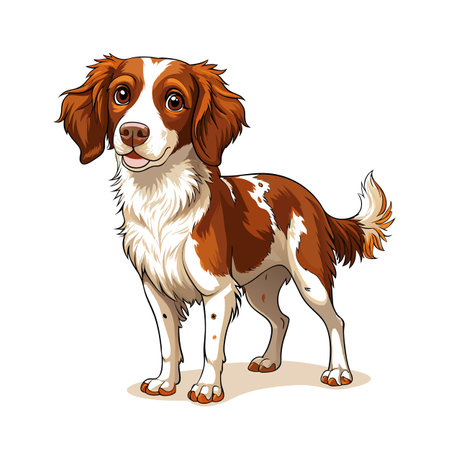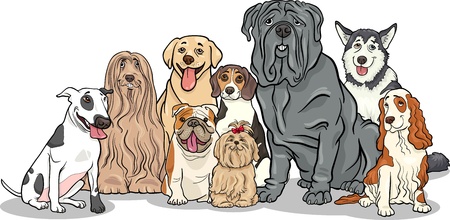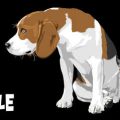Understanding the Importance of Regular Nail Trimming
For dog owners across the UK, maintaining a tidy and welcoming home is often at the heart of daily life, and this extends to caring for our canine companions. Regularly trimming your dog’s nails is more than just a grooming task—it’s essential for their health, comfort, and overall wellbeing. In British homes, where dogs frequently share living spaces such as carpeted lounges or wooden-floored kitchens, overgrown nails can not only damage floors and soft furnishings but also pose genuine health risks to your pet. Long nails may lead to discomfort when walking, increase the risk of painful splits or snags, and even contribute to joint problems over time. Additionally, in rainy or muddy British weather, longer nails are prone to trapping dirt and bacteria, which could result in infection. By keeping your dog’s nails well-trimmed, you ensure their paws remain healthy and your home stays pristine—a true reflection of thoughtful British lifestyle values.
2. Gathering the Right Tools for a Safe Trim
Before you begin trimming your dog’s nails, having the right tools at hand is essential for both safety and comfort. UK groomers recommend investing in quality equipment that ensures a gentle and efficient grooming experience. Below, we’ve outlined the must-have items, popular British brands, and practical tips to help you create a cosy grooming corner at home.
Essential Nail Trimming Equipment
| Tool | Purpose | Recommended UK Brands |
|---|---|---|
| Nail Clippers (Guillotine or Scissor Style) | For precise cutting of your dog’s nails | Ancol, Mikki, Rosewood |
| Nail Grinder | Smooths rough edges and helps shape nails | Dremel, Wahl, Casfuy (available via Amazon UK) |
| Styptic Powder or Pencil | Stops bleeding quickly if you trim too short | Animology, Groom Professional |
| Paw Balm | Keeps paw pads soft after trimming | Pet Head, Beaphar |
| Treats & Calming Sprays | Rewards good behaviour and soothes anxious pets | Lily’s Kitchen, Pet Remedy |
Creating a Cosy Home Grooming Setup
- Select a Calm Spot: Choose a quiet, well-lit room—think of your lounge with a plush rug or a sunny kitchen nook.
- Non-slip Mat: Use a yoga mat or bath mat to prevent slipping and keep your dog comfy.
- Soft Towel or Blanket: Lay this out for extra comfort; it can also help keep fur off your furniture.
- Have Everything to Hand: Organise your tools on a small tray or in a caddy for easy reach during grooming sessions.
- Cosy Ambience: Soft background music (try Classic FM) can help relax both you and your pup.
Top Tips from British Groomers
- Quality Over Quantity: Invest in reputable brands for durability and safety—cheap tools may splinter nails or cause discomfort.
- Keep Tools Clean: Regularly sanitise your clippers and grinders; some pet-safe sprays are available from Pets at Home.
- Mind the Weather: On chilly days, warm your tools slightly by holding them in your hands before use for added comfort.
- Treat Time: Always end each paw with a treat—your pup will soon look forward to their mini-pedicure!
A Gentle British Approach to Home Grooming
The right tools make all the difference when trimming your dog’s nails safely at home. With top-notch British brands and a thoughtfully prepared space, you’ll turn grooming into an enjoyable bonding ritual rather than a dreaded chore. Remember: patience and preparation are the hallmarks of every successful British groomer.

3. Creating a Calm Environment: Setting Up for Success
Ensuring your dog feels relaxed before you begin nail trimming is an essential part of the grooming process—especially within the context of a comforting British home. Choosing the right spot makes all the difference, and with a bit of thoughtful preparation, you can transform even a regular afternoon into a soothing ritual for both you and your furry companion.
Choosing the Perfect Space
Opt for an area in your home that feels familiar and tranquil to your dog. A snug corner of your sitting room with a soft rug, or perhaps a utility room with natural light and minimal distractions, can be ideal. The aim is to create a peaceful sanctuary where your dog senses safety and routine. Here’s a quick guide:
| Space | Why It Works |
|---|---|
| Cosy Rug in Living Room | Soft underfoot, absorbs sound, familiar scents |
| Utility Room | Easy-to-clean floors, quiet and contained |
| Kitchen Nook | Well-lit, away from main foot traffic |
Setting the Mood
In true British style, think about the little touches: pop on the kettle for yourself, play some gentle background music (think classic BBC Radio 2), and perhaps offer your pup their favourite blanket or toy for extra reassurance. Avoid bustling areas or times when children are running about—calmness is key.
Tips to Put Your Dog at Ease
- Sit together quietly in your chosen space for a few minutes before starting.
- Offer gentle strokes and reassuring words in your natural voice.
- Keep treats nearby as positive reinforcement for calm behaviour.
The Comforts of Home Matter
A serene environment not only helps prevent stress but also transforms nail trimming from a chore into a bonding moment. With these thoughtful touches rooted in British home culture, you’ll find both you and your four-legged friend can approach grooming with greater confidence and ease.
4. Step-by-Step Guide to Trimming Your Dog’s Nails
Trimming your dog’s nails can be a gentle and positive experience, especially when you follow the calm, reassuring approach favoured by British groomers. Here’s a detailed walkthrough to help you carry out this important grooming task safely at home.
Preparation: Setting the Scene
- Choose a quiet space: Opt for a well-lit area in your home where both you and your dog feel relaxed.
- Gather essentials: You’ll need dog nail clippers (guillotine or scissor style), styptic powder (just in case), treats, and a soft towel.
- Check your dog’s mood: Aim for a time when your pup is calm, perhaps after a walk or playtime.
Step-by-Step Method
| Step | Description | British Groomer’s Tip |
|---|---|---|
| 1. Gentle Introduction | Let your dog sniff the clippers and reward them with a treat. Speak softly and reassuringly. | “Good boy/girl! Nothing to worry about here.” Use familiar phrases and a cheerful tone. |
| 2. Paw Handling Practice | Hold your dog’s paw gently but firmly. Massage it for a moment before you start, offering praise. | This builds trust and keeps your dog at ease. |
| 3. Identify the Quick | For light-coloured nails, look for the pink area (the quick). Only trim the tip – avoid cutting into the quick. | If in doubt, trim less rather than more. For dark nails, trim tiny bits at a time. |
| 4. Trim with Care | Clip just the very end of each nail, holding the clipper at a slight angle. Go slowly, nail by nail. | Praise after each snip: “Well done!” Offer a small treat for cooperation. |
| 5. Check for Bleeding | If you accidentally nick the quick, apply styptic powder with gentle pressure until bleeding stops. | Stay calm – accidents happen even to professionals! |
| 6. Final Praise & Play | Give plenty of cuddles and another treat once all paws are done to finish on a positive note. | A short play session helps reinforce that nail trims are nothing to fear. |
Positive Reinforcement Throughout
- Treats & Affection: Always reward good behaviour instantly – British groomers swear by “a little something” after every success.
- Gentle Communication: Use soothing words like “steady,” “good lad/lass,” and keep your movements slow and predictable.
- Paws-itive Association: Over time, regular trims paired with encouragement will make this routine stress-free for both of you.
If you ever feel unsure or if your dog is particularly wriggly, don’t hesitate to consult a professional groomer – many offer friendly advice or demonstrations at local salons across the UK.
5. How to Deal with Common Challenges
Trimming your dog’s nails at home isn’t always a walk in the park, especially when you’re faced with wriggly pups or dark, hard-to-see nails. British groomers and experienced home carers have plenty of practical tips to make the process smoother, safer, and less stressful for everyone involved.
Handling Wriggly or Anxious Dogs
If your dog is particularly fidgety or nervous, patience is key. Many UK groomers recommend introducing nail clippers gradually—let your dog sniff them and reward calm behaviour with treats. For especially active breeds like Cockapoos or Jack Russells, try trimming after a long walk when they’re naturally more settled. Some owners find it helpful to enlist a family member for gentle restraint or distraction.
| Challenge | British Groomer Tip | Home Carer Suggestion |
|---|---|---|
| Wriggly Dog | Use high-value treats (like bits of roast chicken) to reward stillness; consider using a non-slip mat on the floor for extra grip. | Work in short sessions over several days instead of trying to finish all four paws at once. |
| Anxious Pup | Play calming music or use a pheromone spray designed for pets before you start. | Sit with your dog in your lap or beside you on the sofa to create a comforting environment. |
Tackling Dark Nails
Dark nails can be tricky, as it’s harder to see the quick—the sensitive area you want to avoid cutting. Professional groomers across Britain suggest trimming just a little at a time and checking the nail’s cross-section: you’ll often see a small grey dot appear before reaching the quick. If in doubt, err on the side of caution and stop early.
Top Tips from UK Groomers:
- Use good lighting: A bright LED lamp or even daylight by a window helps illuminate dark nails.
- Nail file finish: Smooth any rough edges with a pet nail file to reduce snagging on carpets or sofas.
- Have styptic powder on hand: In case you accidentally nick the quick, keep this handy British first aid staple nearby—just dab it onto any bleeding nail tip to stop the bleeding quickly.
A Gentle Approach Makes All the Difference
No two dogs are alike; what soothes one may not work for another. The golden rule from UK professionals is to go slowly and make nail trims part of your regular routine. With patience and these local tips, even common challenges become manageable—and your pup will soon learn there’s nothing to fear from a bit of paw pampering.
6. Finishing Touches and Aftercare
Once you’ve trimmed your dog’s nails, giving a little extra care can make all the difference to their comfort and happiness. In true British fashion, aftercare is about blending practicality with a touch of pampering. Here’s how to ensure your pet feels truly cherished after their mini-grooming session.
Best Practices for Post-Trim Care
Start by gently wiping your dog’s paws with a soft, damp cloth to remove any nail dust. Inspect each paw for signs of irritation or minor nicks. If you spot a small bleed, use a styptic powder — most UK pet shops stock reliable brands like Johnson’s Veterinary Products.
Soothe with Balms from Beloved British Brands
Paw balms are a wonderful way to nourish and protect your dog’s pads after trimming. Many UK-made products feature natural ingredients that offer gentle relief and hydration.
| Brand | Key Ingredients | Benefits |
|---|---|---|
| Moorlands Paw Balm | Shea Butter, Beeswax, Lavender Oil | Soothes, heals cracks, calming scent |
| Billy + Margot Paw & Nose Balm | Coconut Oil, Sweet Almond Oil | Deep moisturising, easy application |
| The Dog & I Balm Bar | Olive Oil, Calendula Extract | Nourishes, supports skin repair |
Creating a Pampering British-Style Treat Experience
No pamper session is complete without a treat! Why not reward your pup with a classic British dog biscuit or homemade scone (dog-friendly recipe, of course)? Settle them on a cosy blanket by the window for some post-trim relaxation — think of it as your dog’s very own ‘afternoon tea’ moment.
Simple Steps for an At-Home Pet Spa:
- Apply chosen paw balm in gentle circular motions.
- Offer a favourite British treat or biscuit.
- Spend a few minutes stroking or brushing for extra bonding time.
- Let your pet rest in their favourite spot to unwind fully.
This blend of practical care and small indulgences ensures that nail trims become something both you and your pup can look forward to — the British way: attentive, thoughtful, and always with a hint of charm.
7. When to Seek Professional Help
Even with the best home care, there are times when trimming your dog’s nails might be best left to British professionals. Recognising these moments ensures your pet’s safety and well-being, as well as your own peace of mind. Below is a helpful guide to determine when it’s time to visit a professional groomer or your local vet:
| Situation | Why See a Pro? |
|---|---|
| Your dog’s nails are black or very dark | The quick (blood vessel) is hard to spot; a professional can avoid causing pain or bleeding. |
| Your dog becomes anxious or aggressive during nail trims | Professionals have experience and equipment to manage stress and ensure safety. |
| Nails are severely overgrown, curling into paw pads | This can cause pain or infection, requiring expert care and sometimes medical attention. |
| You accidentally cut the quick and bleeding won’t stop | Vets can provide proper wound care to prevent infection or complications. |
| Your dog has underlying health conditions (arthritis, heart issues) | Professional groomers or vets can trim nails safely with consideration for medical needs. |
Signs Your Dog Needs Immediate Attention
- Persistent limping after a nail trim
- Visible swelling, redness, or pus around the nail
- Excessive licking or biting at their paws post-trim
Choosing the Right British Professional
When seeking help, look for groomers registered with reputable UK organisations like the British Dog Groomers’ Association, or consult your local vet surgery. Most British groomers will be happy to offer advice and demonstrate safe techniques during appointments. Remember, prioritising your dog’s comfort and health is always in style—a true hallmark of British pet care etiquette.


